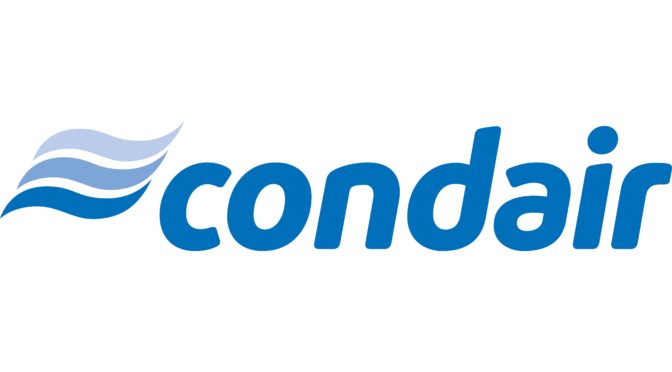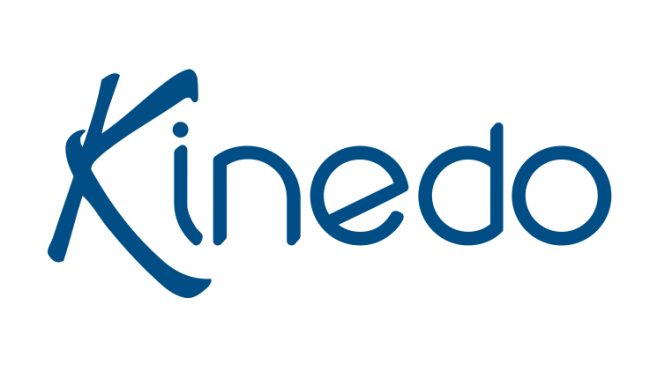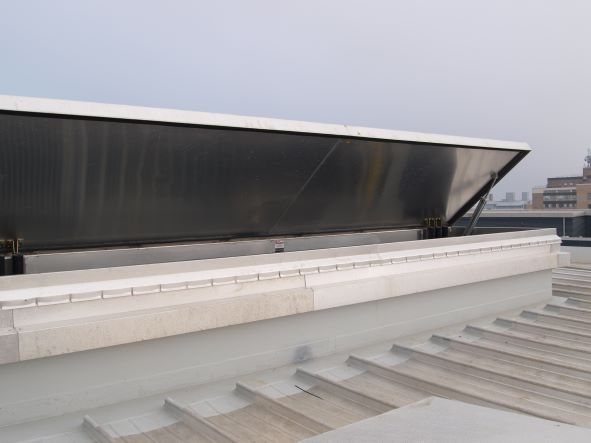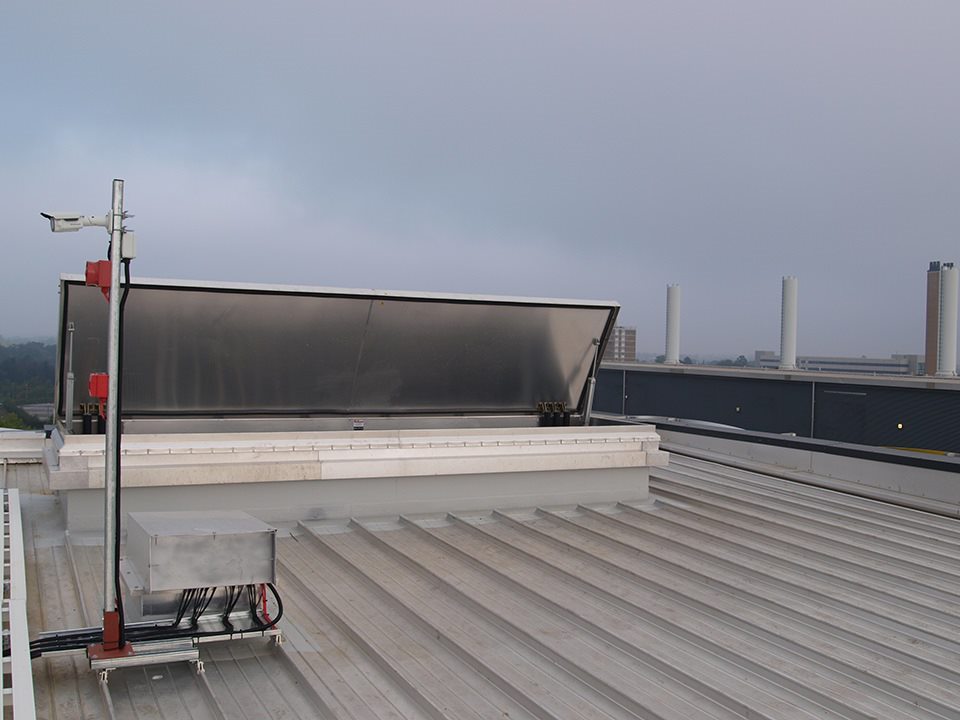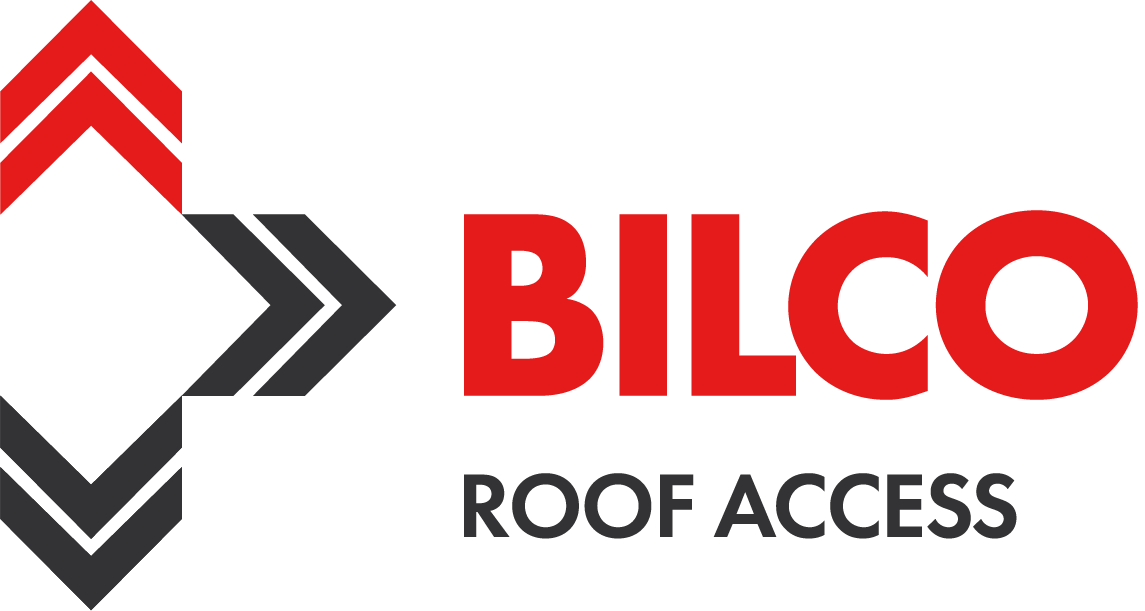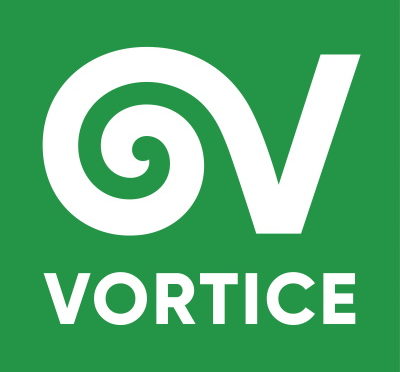Category Archives: All
10-Point Guide To Heritage Humidity Control
Story
Condair, the leading specialist in humidity control, has published a comprehensive 10-point guide to managing humidity in museums, galleries, archives and heritage buildings.
This practical and accessible guide outlines the key challenges of humidity control in heritage environments and offers clear advice on how to monitor and manage it effectively for long-term preservation. It is specifically designed for museum managers, curators, facility managers and consultants working in the heritage sector.

Dave Marshall-George, UK & Ireland Sales Director, comments, “Humidity control plays an essential role in the preservation of our nation’s cultural and historical assets. Curators, conservators and facility managers across the UK’s 2,500 museums and galleries, face the complex task of reducing energy use while maintaining strict environmental conditions. This free guide offers practical solutions to help meet the sector’s sustainability goals, while also safeguarding diverse and often delicate collections.
“Compiled by experts with experience in hundreds, if not thousands, of heritage humidity control projects, this guide identifies the ten most critical considerations for effective humidity management in heritage environments,” Dave added.
The guide is available as a free download from Condair’s website: www.condair.co.uk/heritage
Condair Group is a global leader in humidity control and evaporative cooling, delivering energy-efficient, hygienic, and innovative solutions for commercial, industrial and heritage environments. In the UK, Condair Limited provides comprehensive services including system design, manufacture, supply, install, commissioning, maintenance and spare parts.
View Condair's profile:
Kinedo launches new Ekinox walk-in shower enclosure range
Story
Following hot on the heels of the launch of Alpha Solo panel, Kinedo has added another stunning range of walk-in shower enclosures to its shower portfolio in the shape of the stylish Ekinox+ range.
The stand-out feature of the Ekinox+ range is the option of striking, coloured profiles such as the beautiful and unusual brushed cobalt blue aluminium profile and the vibrant copper or brushed stainless steel option. The Ekinox Solo is a simple glass panel option for an open showering area. It can be installed in a corner, in a recess or against the wall; the latter option requires 2 reinforcement bars. Ekinox Duo features a 180° pivot section to eliminate splash and can be installed with a choice of a chrome straight reinforcement bar (1200mm max) or a floor-to-ceiling bar (2800mm max). It’s available in sizes from 700m to 1400mm.
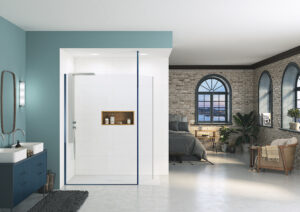
The Ekinox Corner features a fixed panel for corner installations with the Ekinox Solo and Duo. Sizes range from 700mm to 1000mm.
From huge open spaces to small clever space-saving designs, the versatile Ekinox range, with its array of options, ensures it is easy to find the right panel to create the perfect showering area, whatever the size, design or budget. All options and configurations can be seen on the Kinedo website www.kinedo.co.uk and a brochure can be downloaded.
View Kinedo's profile:
Saniflo’s Sanibest Pro provides robust service for guest house
Story
Saniflo UK – a leading designer and manufacturer of macerators, pumps and lifting stations – continues to solve some of Britain’s quirkiest plumbing issues while providing best-in-class technical consultation to ensure the right product is specified first time.
In March 2023, a 100-year-old two-storey guest house apartment above commercial premises in Inverness received a new Sanibest Pro to replace a non-Saniflo macerator that had been changed three times in seven years and had required multiple repairs and maintenance due to clogged blades.
The experts at Saniflo advised the property owner that the Sanibest Pro, although usually specified for commercial applications, would suit this domestic scenario because a more powerful product was required to dispose of items that clog blades, such as wet wipes. The Sanibest Pro occupies the same space as its defunct predecessor, so no additional plumbing or pipework was required.
Matt Watson, Saniflo National Sales Manager, recommends that customers call the Saniflo technical team to double-check their requirements as every situation differs, and there may always be a better solution. He says: “Our engineers often attend call-outs where a product has been misspecified. We would always recommend a commercial product for an application like this, particularly when members of the public use the facility. Guests often don’t follow disposal guidelines and put bulky items down the WC; they don’t tend to worry as they do in their homes, so mitigating for that is important.”
View Saniflo's profile:
BILCO UK supply special size Smoke Vents for the new nine-storey car park at the Addenbrookes Hospital site
Story

The massive development of the Addenbrookes Hospital site in Cambridge has seen the construction of several new buildings over the last few years.
In addition to the new Papworth Hospital and many other developments as part of the overall plan to create this centre of clinical excellence for the NHS Cambridge University Hospitals, there has also been significant investment in the infrastructure to support this development.
Given the huge scale of this project, BILCO UK have been called on to supply a wide range of roof and floor access solutions to the site over the last few years, including motorised TER Floor Doors, JD-AL Floor Doors, Roof Access Hatches (both manual and motorised), and also a number of special sized Natural Smoke and Heat Exhaust Ventilators.
The most recent part of the project saw BILCO UK supply special size Smoke Vents for the new nine-storey car park at the hospital. This project, undertaken by Vinci Construction, has created 1,228 new parking spaces to meet growing demand at the renowned medical facility as it expands to accommodate the relocation of Papworth Hospital.
Twisted Aluminium horizontal cladding, finished in yellow and silver inspired by the surrounding rapeseed fields, maximises light and ventilation whilst shielding cars from intense sunlight. The new car park also serves the Rosie Maternity Hospital.
The BILCO UK special sized smoke vents are designed to allow the rapid evacuation of smoke and heat in the event of fire but can also be used to provide additional passive ventilation for the building. Also, with the addition of a fixed staircase, the unit can be used to enable access to the roof area for essential maintenance.
You can view the BILCO UK range of Natural Smoke and Heat Vents at www.bilcouk.co.uk
View Access 360's profile:
Condair ‘Brand Leader’ Interview Podcast 2 – Transcript to support learning
Story
‘Understanding The Relationship Between Health And Humidity Is Key To Optimising Indoor Air Quality’
Condair ‘Brand Leader’ Interview Podcast – Transcript to support learning
Every effort has been made to flawlessly transcribe the interview to support learning but please consider the recorded audio of the interview as the actual source of information for learning purposes.
Hi this is Mick de Leiburne for BusinessNet Explorer – and welcome to a special edition of our ‘Brand Leader’ interview series.
Well, due to the COVID pandemic, management of ‘indoor air quality’ – has never been a hotter topic – and there has been – much talk about the need – for ‘increased ventilation’ in buildings – to help combat the spread of viruses. With me today is Dave Marshall-George, UK Sales Director at Condair, who is here to discuss – another important, but less understood aspect of air quality management – that of ‘low indoor humidity’.
Dave joins us on the phone…
So, Dave, what impact does ‘low humidity’ have – with regards to maintaining a ‘safe indoor environment’?
Hi Mick, thanks for inviting me in to discuss this today.
Well, the humidity level of the air inside our buildings has a great deal of influence over how airborne viruses behave and how our bodies deal with them.
I think most of us are now familiar with the fact that people release viruses in droplets when we talk, breathe or cough. And also the fact that the smaller these droplets are, the longer they float in the air and the further they can travel.
How does the indoor humidity level affect the droplets?
Well, if a room has a low air humidity, below 40%RH, these floating droplets will shrink through increased evaporation. So low indoor humidity results in more droplets small enough to float around in the air, which subsequently increases the risk of infection to anyone in the room.
The second effect humidity has on airborne viruses is connected to their survival time. Airborne viruses, such as the flu, have a limited duration when they remain infectious. Many studies have shown that humidity is a major factor in this survival time and that when the humidity is lower than 40%RH, this infectious lifetime is much longer than when humidity isabove 40%.
And lastly, and I think most importantly, is the effect dry air has on us and our bodies. Our first line of defence against airborne pollutants is a process called mucociliary clearance. Mucous in the nose and throat capture airborne pollutants as we inhale them. It thentransports them to our digestive system, where they are destroyed. In low humidityenvironments, this natural defence mechanism is impaired, as our mucous membranes dry. This leaves us much more susceptible to airborne infections.
How would you summarise the effect that low humidity in a room has to health?
So, in summary, dry air below 40%RH allows more viruses to float around in a room, it allows the airborne virus to survive for longer while floating, and low humidity reduces ourbody’s natural ability to fight off respiratory infections. So low humidity is a triple threat to health.
Wow, it certainly seems like humidity is important. But if it has such a dramatic impacton our health, why don’t we know about it already?
Mick I think that’s a great question and you’re right. Even though the effects of low humidity have been well researched, it is not common knowledge. I think this is due to humidity’s imperceptibility.
We cannot see it. We cannot feel it. We can walk into a room and immediately know if the airis hot or cold. But with humidity, we have no sensory organ that tells us if the air around us is too dry.
And due to this invisible nature, society is simply not well informed about the negative effects of low humidity. But as a society, we suffer the consequences of low indoor humidityevery winter.
What happens because of low humidity in the winter?
It is widely accepted by the scientific community that low indoor humidity is a significant contributing factor to the seasonality of respiratory infections, such as flu.
The onset of the flu season in the winter closely corresponds to when our indoor humidity is dropping below 40%RH. Cold winter air contains very little moisture, so when it is heated in our buildings, its relative humidity falls. In a building heated to 21°C, the indoor humidity can drop into the unhealthy range, below 40%RH, when it’s around 10°C or less outside. And this is the case for much of our winter.
So what can we do about it?
Humidification. Using humidifiers to add moisture to the indoor air and manage humidity within the healthy range of 40-60%RH. Just as we use heating and cooling systems to manage our temperature, humidifiers are used to proactively control a building’s humiditylevel. Humidity control in the winter is a natural, effective and non-pharmaceutical method ofmitigating the spread of respiratory infections, such as the flu and COVID.
How practical is humidification of buildings – as a solution on a nationwide scale?
Very practical. As a company, Condair does this already in thousands of buildings around the world. But it tends to be for manufacturing processes that need a certain level of humidity. Sectors such as printing, pharmaceuticals, textiles, wood or anywhere that deals with materials that are affected by low humidity.
When a manufacturer is losing money because their product is drying out, there is a clearbenefit in buying a humidifier and maintaining optimal indoor humidity, and they do it.
Is it only the Manufacturing sector where you are doing this already?
We also humidify many public buildings for the health of occupants. But it tends to be where employers are very focused on reducing absenteeism. High end offices, accommodating high earning employees, present a clear return on investment in maintaining optimum air quality to minimise staff sickness.
But we really should be humidifying places like hospital wards and waiting rooms, GP surgeries and schools. These areas are the front line in the fight against seasonal illness. Maintaining 40-60%RH in these environments should have been legislated years ago. But it takes investment, and the focus is typically on keeping costs connected to these buildings to an absolute minimum.
However, considering the gigantic cost of the pandemic on society, both at a human level and a financial one, we must invest now to improve the safety of our buildings and limit the threat of future pandemics.
What is the current guidance regarding humidity levels for public buildings?
Organisations such as the Chartered Institute of Building Services Engineers have been recommending 40-60%RH as the optimum indoor humidity for human health for years. But we need these advisory recommendations to become legislative building codes before we’ll see large scale humidification of public buildings to reduce seasonal illness and protect occupants health.
I see. I suppose that would be similar to – how ventilation of buildings is now being promoted by politicians and bodies like the World Health Organization. So how does ‘humidity control’ fit alongside ‘increased building ventilation’ Dave?
Good question. I think it’s great news that healthier levels of ventilation for buildings are now being set by politicians and the people managing our buildings. Ventilation physically removes pollutants, such as COVID, from the indoor environment. But it’s not the only strategy we should be employing to maintain a safe indoor atmosphere.
Ventilation during the winter, can in fact, dry an indoor atmosphere even more. More heat being applied to dry winter air, means even lower indoor humidity. So increased ventilation alone might be removing viruses from the air, but it will also be drying our nose and throat even more, making us physically more susceptible to infection.
So how does humidity control fit alongside ventilation? Well, in buildings with centrally managed air conditioning systems, a humidifier can be installed in the air handling unit without issue. This ensures that the building’s humidity is kept at an optimum level, along with the levels of ventilation. We do this all the time and it’s standard practise. But it does obviously need more investment.
And how about buildings where there is no centrally managed air conditioning system?
For buildings without central air handling units and ducting, humidifiers can be installed that introduce moisture directly to the rooms. These could be mobile units, wall-mounted steam humidifiers or systems that spray purified water from nozzles. The type of humidifier really depends on the layout of the building. Again it does need investment, but that’s that same as any aspect of indoor air quality management. Whether it’s heating, cooling, ventilation or humidity control. There is a cost associated, but if the cost means safer buildings, reduced infection rates, less burden on our health services, fewer unnecessary deaths and potentially avoiding lockdowns, then there certainly is an excellent return on that investment.
Thanks Dave. If there’s one message you wanted to leave our listeners with, particularly those working in the types of buildings you mentioned, like hospitals and schools, what would it be?
It would be to get to know your indoor humidity. Buy a cheap hygrometer, for just a few pounds. This is something that measures and shows you what your indoor humidity is – just like a thermometer shows temperature. If it’s consistently below 40%RH, ask your line manager or building manager what the options are for managing your indoor humidity better. If they need more information on why or how to do this, there’s plenty of info on our website at Condair.co.uk.
Well, Dave thank you again for joining us today – on this special edition BNE Product News ‘Brand Leader’ interview podcast – to discuss why ‘Understanding The Relationship Between Health And Humidity Is Key To Optimising Indoor Air Quality’
Thanks very much Mick. I really enjoyed it.
That’s a pleasure. Cheers.
For more information about Condair please go to www.condair.co.uk
View Condair's profile:
Recotherm ‘Brand Leader’ Interview Podcast 3 – Transcript to support learning
Story
‘BNE Bite-Sized Learning podcast series – Swimming Pool Ventilation industry update for 2022’
Recotherm ‘Brand Leader’ Interview Podcast – Transcript to support learning
Every effort has been made to flawlessly transcribe the interview to support learning but please consider the recorded audio of the interview as the actual source of information for learning purposes.
Hi, this is Mick de Leiburne for BusinessNet Explorer and welcome to the latest BNE Brand Leader interview for our BNE bite-sized learning podcast series for Construction & Building Services product specifiers – today we are joined by a very popular industry thought leader guest on this podcast – Martin Killen – MD at Recotherm – to provide specifiers with a Swimming Pool Ventilation industry update for 2022, covering Covid 19, Sustainability and Future Trends.
Hi Martin, thanks for breaking into your busy schedule to share some of your specialist industry knowledge on these key specification topics.
Hi Mick, thanks for inviting me
Always a pleasure
Martin, first could you give us an update on the Covid 19 situation with regard to Swimming Pools?
We have been working with Covid 19 limitations now for two years, and although I know of a number of friends and family that have caught Covid in a hospital, I haven’t heard of anybody who has caught covid in a swimming pool. But we’re still advising caution, and as always, recommending fresh air ventilation to control the pool hall environment. Not only because of the Covid situation, but because it gives a better environment and is cheaper to run.
Let’s move onto the increasingly pressing issue of Global Warming and currently available HVAC options to support Sustainability objectives?
Yes, we’re dealing with the government’s attempt to counter the effect of global warming. I think we’reall aware that the government will ban the use of conventional fossil fuel boilers in new houses in 2025, and they are actively promoting heat pumps, as their preferred alternative.
The problem people need to be aware of is that if you buy a 27kW boiler it will provide 27kW if installed correctly. If you buy a 27kW heat pump its output will depend on the flow temperature required, and if it’s an air source heat pump it will also depend on the ambient air temperatures. What you must take into account is that a conventional radiator system would have been designed to run with water at 70 to 80 oC. You will not get the same performance out of them if you supply water at 50 oC. There are units on the market that can run at low temperatures and provide high temperature water for your radiator systems, but the efficiency drops right off and you will find your energy bills increasing because you are replacing gas with electricity which can be as much as 5 times the price.
Can heat pumps be used in Swimming Pools to mitigate the effects of Climate Change?
In the swimming pool environment, we have to keep the air temperature close to the temperature of the pool water, and as most clients want the pool at around 30oC it can become quite challenging to achieve with water off a heat pump at 50oC. In some cases, you would have to increase the size of the unit in order to get the required amount of heat into the building, or, you could just except that the unit will not be able to maintain a temperature of 30oC when it is 0oC outside. In Britain it is very unusual for the temperature to be at or below 0oC during the day so accepting that the temperature will be a little lower, say 28oC, could save on running cost and prevent you having to buy a larger and more expensive ventilation unit. You may also be able to reduce the size of the heat pump, and I believe, that most people would not notice the difference between 30oC and 28 oC air temperature in the pool hall.
What Alternatives could be made available?
An alternative to the ground or air source heat pump that produces water would be a unit where the refrigerant coil was fitted directly into the AHU, therefore eliminating the need to produce water. This is what we at Recotherm have done with the Aerum unit, which has all the features of the Aeris unit with regards to control of the pool hall humidity, but instead of being connected to a boiler or air to water heat pump, the unit is part of the heat pump.
One major advantage of this is that you get substantial cooling in the summer.
Are there any cost implications with this alternative use of the technology?
Yes, this solution is more expensive than the standard Aeris unit connected to a boiler, but, given that after 2025 you will not be able to install a boiler in a new home it offers a real solution … with some advantages. We have been working closely with one of the major suppliers of air conditioning units in the UK to give customers an alternative to the air to water heat pumps. The advantage of working with a major supplier is that we get the latest technology, using the best and most efficient compressors, and running with the least environmentally damaging refrigerants. It also means that there is a network of service engineers in place from day one if you have a problem. And if the units are installed by a qualifying company, the units come with a 7-year warranty.
So, it is an interesting time to be working with swimming pool ventilation units.
Finally, just to round up this 2022 update for the Swimming Pool Ventilation industry, how about Future Trends – what could be made available next for industry specifiers?
I still think filtration will become more important, particularly with the Covid situation. What you need to know is that Covid does not float in the atmosphere, it attaches itself to particles in the air. Obviouslythe less particles in the air and the smaller these particles are the less likely it is to transmit. We have filters that are 70% efficient at 0.1 micron so potentially could be Covid safe, but Covid isn’t the only reason to fit high efficiency filters. Our cities are so dirty that it is starting to cause respiratory problem and filtering to this level will make a big difference.
Well Martin, thank you for this update, very educational as ever, with a lot of really useful information and industry insights for specifiers listening to this podcast to take away with them. We wish the Recotherm brand the best of luck with its ongoing pioneering and as always innovative product development adventure for 2022.
Thank you Mick
Cheers
For more information about Recotherm swimming pool ventilation systems – please go to www.recotherm.co.uk
View Recotherm's profile:
Vortice ‘Brand Leader’ Interview Podcast 3 – Transcript to support learning
Story
‘Good Ventilation: QUIET VENTILATION SYSTEMS’
Vortice ‘Brand Leader’ Interview Podcast 3 – Transcript to support learning
Every effort has been made to flawlessly transcribe the interview to support learning but please consider the recorded audio of the interview as the actual source of information for learning purposes.
Hi this is Mick de Leiburne for BusinessNet Explorer
And welcome to the – third out of six – in our ‘special edition’ bite-sized learning series of ‘Brand Leader’ podcasts, where we discuss how Good Ventilation can be achieved in the home and in the workplace with Vortice thought leadership and product solutions.
Well, as the world increasingly recognises the role of Good Ventilation, Jennifer Quinn, Technical and Marketing Manager at Vortice joins us today to talk about Quiet Ventilation Systems and why she is shouting about their new Lineo Quiet range …
Jennifer joins us on the phone…
Hi Jennifer, thank you for making time in your busy schedule to allow us again – to tap into your knowledge – on the key areas of Good Ventilation on the BusinessNet Explorer podcastand today we are focussing on The Importance of Quiet Ventilation.
Hi Mick, yes I am looking forward to discussing the need for Quiet Ventilation Systems and our brandnew Lineo Quiet range today.
Jennifer, good to have you here with us today. Why should we be concerned about the noise that our ventilation fans make?
Several years ago the UK’s Chief Medical Officer noted that noise is second only to poor air quality in its effect on human health, so we’ve been working for a long time developing acoustically lined fans for our ranges so that we can make our ventilation systems as quiet as possible. There’s nothing worse than the drone of a noisy fan if you’re trying to relax, get to sleep, read or work. Also research shows many people turn off extractors due to noise which can then in turn lead to issues with mould and damp and problems further down the line.
What specific products has Vortice developed with noise in mind?
Our already established Lineo fan range now includes the Lineo Quiet and the new Lineo Quiet ESrange, Other units include the axial Punto Evo Flexo and our heat recovery units the Neti and Avel.
What’s special about the Lineo Quiet?
The new Lineo Quiet range is the ventilation equivalent to a Swiss army knife, designed to offer an effective solution to a wide range of ventilation demands, resulting in a powerful tool for both the installer and the end user. VORTICE wanted to create a powerful fan range whilst keeping the unit extremely quiet.
The fan has therefore been redeveloped with special sound absorbing material to help absorb the sound and flow straighteners and re-designed straightening veins inside the unit to ensure a lot less energy wastage. The energy efficient Lineo Quiet ES also offers an acoustically lined fan and is equipped with electronically controlled brushless EC motors.
Another great feature of the new Lineo Quiet range is that it is environmentally friendly, very easy to fit and maintain and its recyclable and has been designed for disassembly.
How quiet is quiet?
Quiet is down to interpretation and is very personal. However as a general rule the dba of the units when installed correctly with the correct sound attenuators would be no noisier than rustling leaves.We do have a vast amount of sound data which has been tested and published and these units are one of the lowest dba’s on the marketplace.
Just how important for your health is it to be in a quiet environment?
You know when you suddenly notice a noise, you can’t un-notice it? Well after a while that becomes really stressful, it can even bring on increased blood pressure levels, heart attacks and stroke, never mind disturb your sleep patterns.
VORTICE recognises that noise can be a serious issue for many people and therefore always ensures the lowest possible dba is achieved to help create a harmonious environment.
Does Vortice have any plans to launch any other quiet fans to its range?
Yes, noise levels are an important marker in our new product development programme, so I know there are already several more quiet fans in development.
Noisy appliances can be really invasive to the living or working environment, so anything we can do to do keep noise to the minimum obviously helps. The worst scenario for us would be people turning off fans in order to stop the noise, which would then result in poor indoor air quality. Vortice always wants to ensure that their fans are being used as they should be to create a quiet and peaceful environment to enhance their health.
Well Jennifer thank you again for joining us today on this – third in a series of six – special edition BNE Product News ‘Brand Leader’ interview podcasts with Vortice discussing best practice in Good Ventilation.
Thank you Mick, thank you for your time today
Always a pleasure.
For more information about the Vortice range of products, please go to www.vortice.ltd.uk
View Vortice's profile:
PODCAST: LOW HUMIDITY’S IMPACT ON HEALTH
Story
The need for increased ventilation to improve indoor air quality has been much discussed in the media but humidity’s impact on the health of building occupants is much less understood. In this 10-minute interview, Dave gives a summary of the main effects low humidity has on the transmission of viruses, such as the flu and COVID, what we can do about it and the practicalities of improving indoor humidity levels on a nationwide scale.
Dave comments, “The invisibility of humidity to our senses has led to a lack of general understanding about the role it plays in maintaining a healthy indoor environment. We can’t see it. We can’t feel it. But low indoor humidity is a significant factor in the rise and fall of seasonal respiratory illness every winter. There is, however, something we can do about this. In this short podcast, I try to clearly explain the importance indoor humidity has on mitigating the spread of airborne viruses and how we can better manage our indoor humidity for the health of the nation.”
The podcast is available on Spotify, Google Podcasts, Soundcloud and Apple iTunes by searching for “Condair Podcast”, or on the Condair.co.uk website.
Condair Group is the global leader in humidification, dehumidification and evaporative cooling. The company has production sites in Europe, North America and China, its own sales and service organizations in 22 countries, and representatives in 50 further locations worldwide. Condair is represented in the UK by Condair Ltd, which offers system design, supply, installation, commissioning, maintenance and spares. You can find out more by visiting the company’s website at www.condair.co.uk.
View Condair's profile:
Howe Green supplies floor access covers for inspirational university building
Story
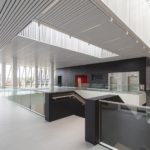
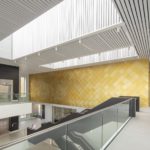
Howe Green supplied over fifty aluminium floor access covers for the award-winning Collaborative Teaching Laboratory (CTL) at the University of Birmingham’s Edgbaston Campus, part of a £40 million plus investment by the university into Science, Technology, Engineering and Mathematics (STEM) subjects.
The robust 6,700 m2 brick structure was designed by architect Sheppard Ross. It has won four awards in the RIBA West Midlands Awards including Building of the Year 2019. The building design was meticulously detailed, and the materials used were chosen to minimise maintenance and enhance the life expectancy of the building.
Howe Green 5000 Series Light Duty Aluminium and 7500 Series Medium Duty Aluminium Floor Access Covers were supplied to main contractor Morgan Sindall and were specified by the architect, Sheppard Ross. The covers were installed and infilled with ceramic floor tiles.
In addition to ceramic tiles the 5000 Series and 7500 Series can be used with marble, terrazzo, concrete, resin, wood or parquet flooring. The 5000 Series is suitable for use in areas with pedestrian traffic and the load performance of the 7500 Series is for cars and light delivery vehicles up to 5 tonnes pneumatic tyre load.
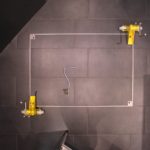
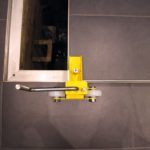
The access covers can be removed, safely and easily, for maintenance purposes with the use of lifting keys or Howe Green Access Cover Skates. The access covers fit perfectly flush with their surround to avoid the risk of hazard from slips or trips.
Howe Green has over thirty six years of experience in supplying floor access covers. Howe Green’s access covers can be found in many educational settings including John Moores University in Liverpool, St Bernadette’s Primary School in Antonshill, Scotland, and the University of Surrey.
If you would like Howe Green to assist with your requirement for a solution to access
concealed building services located under hard flooring please call 01920 463230 or visit
www.howegreen.com.
